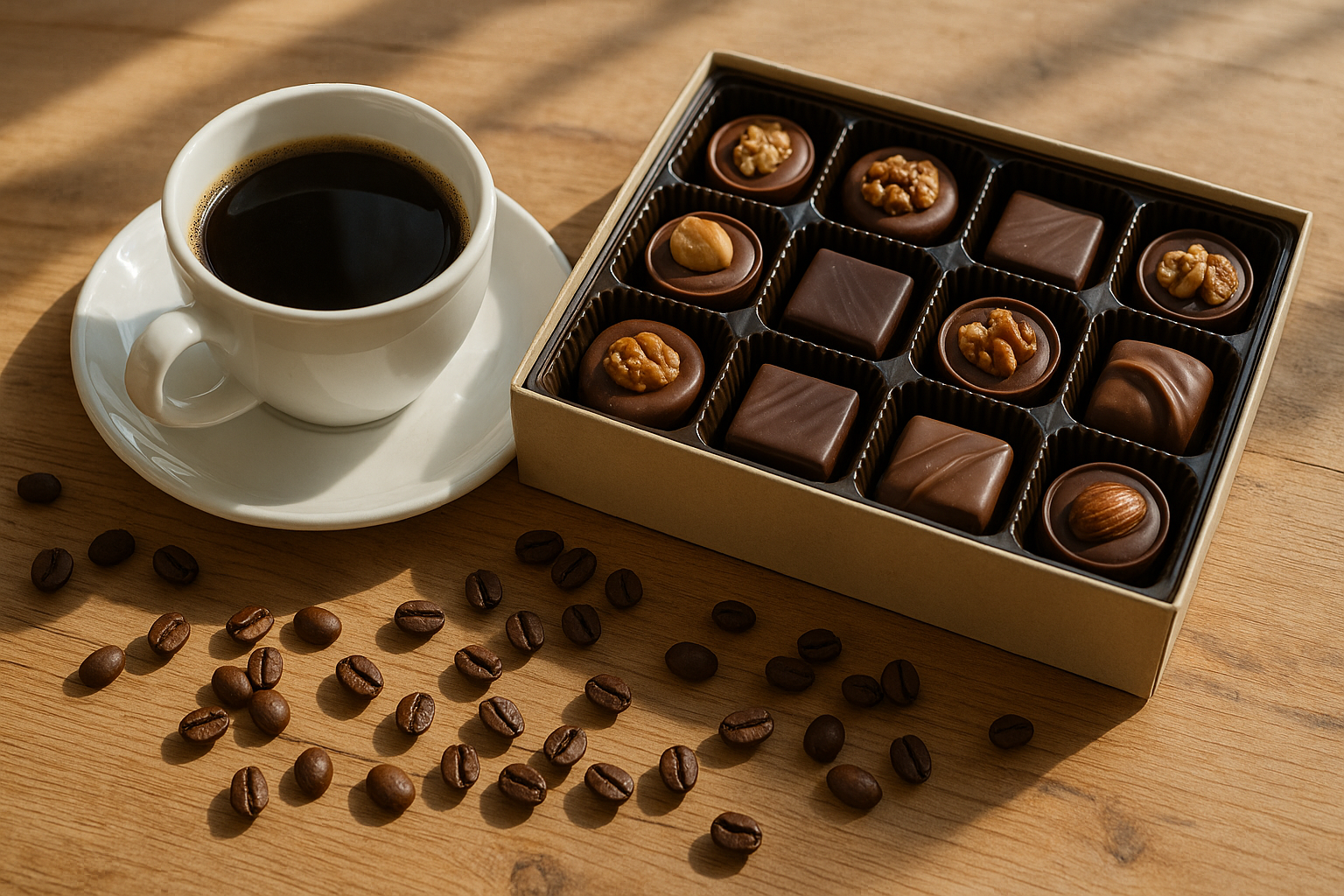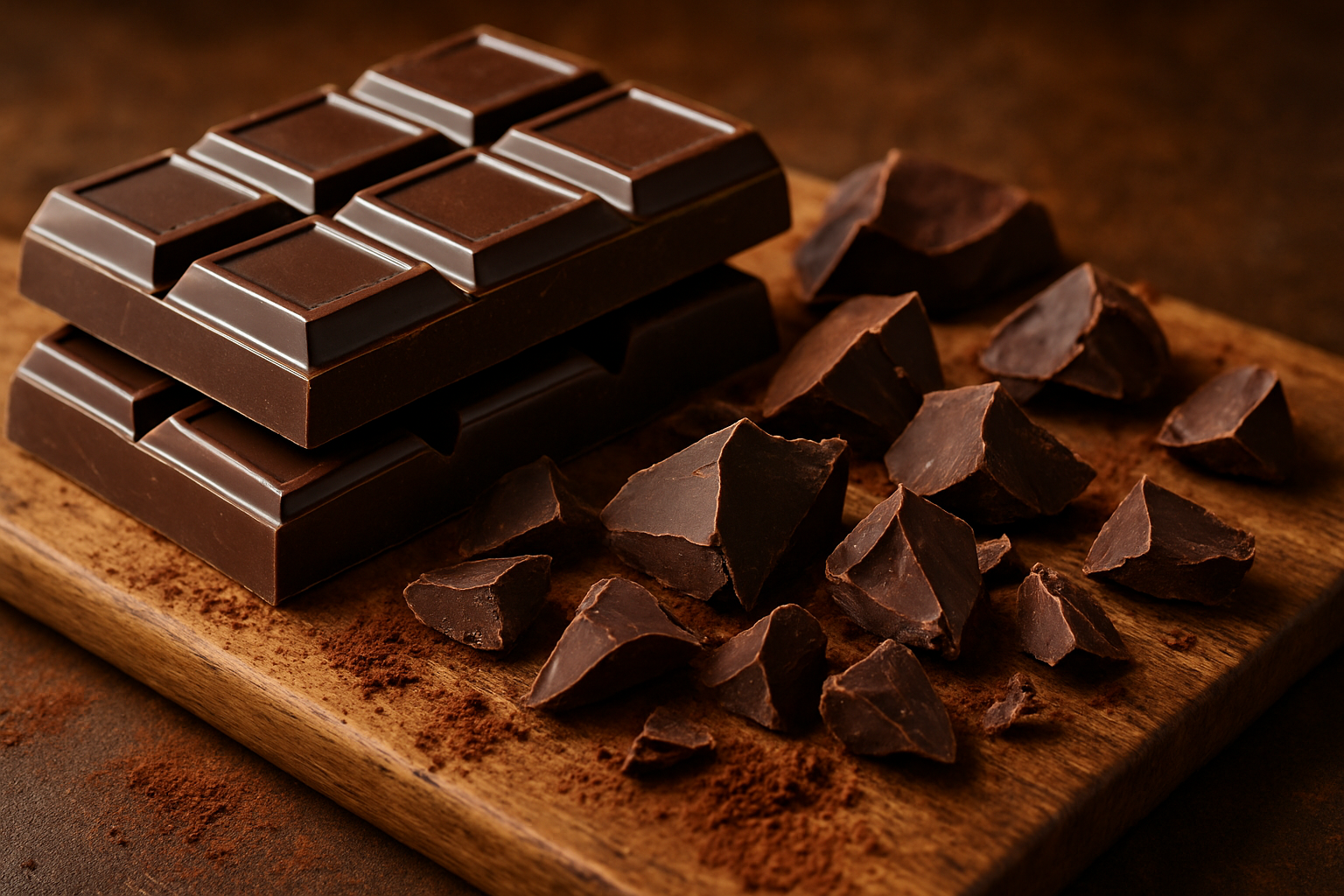You reach for that tempting bar of chocolate, perhaps one of Friars of Keswick's exquisite creations, only to find its once glossy, uniform surface marred by a dull, dusty grey film or you are confronted by white spots on your chocolate. Your heart sinks. Is this chocolate gone bad? Is it safe to eat? This common phenomenon is known as "chocolate bloom," and while it might look unappetising, the good news is that in almost all cases, yes, it is perfectly safe to eat.

RUM CHOCOLATE TRUFFLES | MILK
Chocolate bloom is not a sign of spoilage, mould, or contamination. So what is chocolate bloom? It's a physical change in the chocolate's structure, occurring due to improper storage or temperature fluctuations. There are two main types of bloom: fat bloom and sugar bloom, each with distinct causes and appearances.
Type 1: Fat Bloom
Fat bloom is by far the most common type of bloom you'll encounter. It appears as a hazy, whitish film or white spots on the chocolate. When bloom occurs, people often ask themselves if this is chocolate gone bad. It is also often mistaken for mould, but closer inspection reveals its distinctive, slightly waxy texture.
What Causes Fat Bloom?
Fat bloom occurs when the cocoa butter, one of the primary fats in chocolate, separates from the other ingredients and recrystallises on the surface. This happens due to:
-
Temperature Fluctuations: This is the leading cause. When chocolate is stored in an environment where temperatures rise and fall, the cocoa butter within the chocolate melts and then re-solidifies. As it re-solidifies, it doesn't always re-integrate smoothly into the cocoa mass. Instead, it can migrate to the surface and crystallise there, forming the characteristic greyish layer.
-
Think about leaving a chocolate bar in a warm car, then bringing it into a cool house. Or storing it near a window where it's exposed to sunlight during the day and cooler temperatures at night. This often results in bloom and those distinctive white spots, prompting you to think, has my chocolate gone bad?
-
-
Improper Tempering:
During the chocolate manufacturing process, chocolate undergoes a crucial step called "tempering." This involves carefully heating and cooling the chocolate to specific temperatures to stabilise the cocoa butter crystals. Properly tempered chocolate has a smooth, glossy finish and a satisfying "snap." If chocolate isn't tempered correctly, or if its temper is broken during storage or transport, the cocoa butter crystals can become unstable, leading to fat bloom. This is more common in artisanal chocolates or home-made confections, but can also affect commercially produced bars if they experience significant temperature abuse.
-
Ingredient Migration: In chocolates with fillings (like our renowned truffles with their creamy ganache centres), fats from the filling can migrate into the surrounding chocolate shell. If these fats are incompatible with the cocoa butter in the shell, or if temperature fluctuations occur, they can cause a bloom effect.
Is Fat Bloom Safe to Eat?
Absolutely. Fat bloom is purely an aesthetic issue. Do I need to worry about those white spots on chocolate? Not at all. The chemical composition of the chocolate hasn't changed in a way that makes it harmful. While the texture might be slightly different – perhaps a bit softer or more crumbly, and the melt-in-your-mouth quality might be reduced – the flavour is generally unaffected, or only subtly altered. You might notice it doesn't have the same satisfying snap, but the taste will still be there. This is not chocolate gone bad, but a non harmful reaction.
Type 2: Sugar Bloom
Sugar bloom is less common than fat bloom but can be equally startling. It appears as a fine, dusty, gritty, or grainy white film on the chocolate's surface. Unlike the waxy appearance of fat bloom, sugar bloom often looks more like powdered sugar or tiny, abrasive crystals.
What Causes Sugar Bloom?
Sugar bloom occurs when chocolate is exposed to moisture. This can happen if:
-
High Humidity: Storing chocolate in a very humid environment causes moisture from the air to condense on the cooler surface of the chocolate. This condensation dissolves the sugar crystals on the chocolate's surface and leaves the familiar white spots on chocolate.
-
Sudden Temperature Changes (Especially Cold to Warm): Taking chocolate directly from a very cold environment (like a refrigerator) into a warm, humid room can cause condensation to form rapidly on its surface. The dissolved sugar then re-crystallises when the moisture evaporates, but in larger, more visible crystals.
-
This is why it's generally advised not to store chocolate in the refrigerator unless absolutely necessary (e.g., in very hot climates), and if you must, bring it to room temperature slowly within its packaging before opening.
-
Is Sugar Bloom Safe to Eat?
Yes, sugar bloom is also perfectly safe to eat. Like fat bloom, it's a superficial change. The taste of the chocolate itself remains unchanged, though the texture might be gritty or grainy due to the re-crystallised sugar. It won't cause any harm or illness.

HONEY PRALINE CHOCOLATES
How to Prevent Chocolate Bloom
While bloom is harmless, preventing it helps maintain the visual appeal and optimal texture of your chocolate. Here are the best practices:
-
Store Properly: Keep chocolate in a cool, dry place. The ideal temperature range for most chocolate is between 15°C and 18°C (59°F and 65°F).
-
Avoid Temperature Fluctuations: Store chocolate away from direct sunlight, heat sources (like ovens or radiators), and areas prone to significant temperature swings.
-
Control Humidity: Ensure the storage area isn't too humid. A relative humidity of around 50-60% is ideal. If you live in a very humid climate, an airtight container can help.
-
Avoid Refrigeration (Unless Necessary): Refrigerators are often too cold and too humid for ideal chocolate storage. If you must refrigerate, place the chocolate in an airtight container or double-wrap it, and allow it to come to room temperature slowly before unwrapping to prevent condensation.
If you weren’t aware of what chocolate bloom is then you can now rest easy in the knowledge that it is nothing to worry about. Generally presenting as a cosmetic change, but not chocolate gone bad, there is no need to worry about those white spots on your chocolate. Plus, as in our guide to storage above you can ensure that as far as possible you won’t find your chocolate blooming, just blooming delicious!
The Bottom Line for Your Friars Chocolate
When you unwrap a Friars of Keswick chocolate and find a bloom, there's no need for concern. Whether it's the whitish film of fat bloom or the powdery dusting of sugar bloom, it's a testament to the natural properties of chocolate and a simple indicator of its journey from our shop to your hands. It's still the same high-quality, delicious chocolate inside. So go ahead, enjoy that decadent piece, knowing it's perfectly safe and still packed with the flavour you expect from us.







